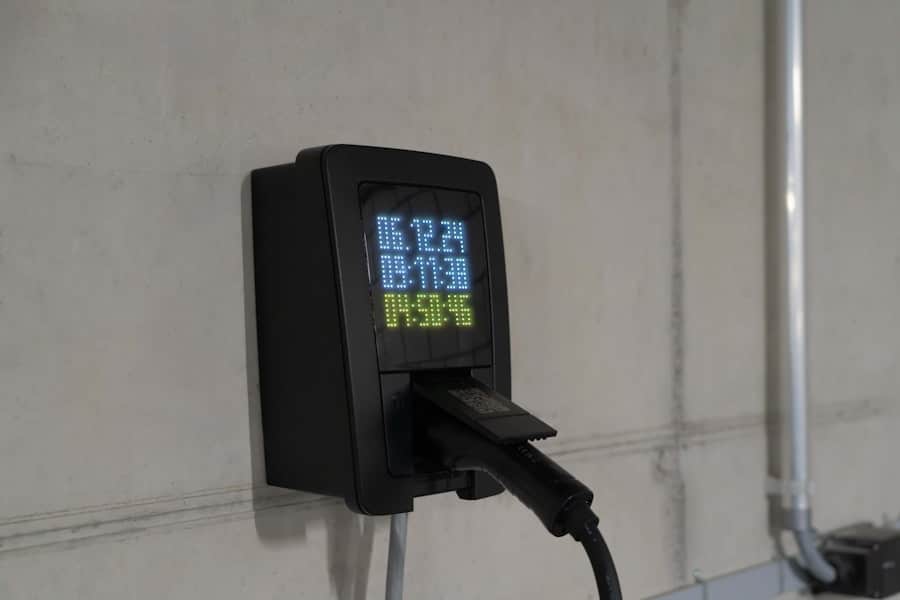In recent years, the global energy landscape has undergone a significant transformation, driven by the urgent need to address climate change and the quest for sustainable energy solutions. Renewable microgrids have emerged as a pivotal component of this transition, offering localized energy systems that can operate independently or in conjunction with the main power grid. These microgrids harness renewable energy sources such as solar, wind, and biomass, providing communities with a reliable and resilient energy supply while reducing their carbon footprint.
The concept of microgrids is not merely a technological innovation; it represents a paradigm shift in how communities can manage their energy resources, enhance energy security, and promote sustainability. The appeal of renewable microgrids lies in their ability to empower communities by decentralizing energy production and consumption. Unlike traditional energy systems that rely heavily on centralized power plants, microgrids enable local generation and distribution of electricity.
This decentralization fosters greater control over energy resources, allowing communities to tailor their energy solutions to meet specific needs and preferences. As the world grapples with the challenges posed by climate change, energy insecurity, and rising electricity costs, renewable microgrids present a viable pathway toward a more sustainable and resilient future.
Key Takeaways
- Renewable microgrids enable communities to generate and manage their own clean energy locally.
- Community A’s transition showcases practical steps and positive outcomes of adopting renewable microgrids.
- Benefits include increased energy resilience, cost savings, and environmental sustainability.
- Challenges such as funding, technical expertise, and regulatory hurdles can be addressed through collaboration and planning.
- Empowering communities with renewable microgrids fosters greater energy independence and social cohesion.
Case Study: Community A’s Transition to Renewable Microgrid
Community A, a small town located in a rural area, faced significant challenges related to its energy supply. The community relied heavily on fossil fuels for electricity generation, leading to high energy costs and increased greenhouse gas emissions. Recognizing the need for change, local leaders initiated a project to transition to a renewable microgrid powered primarily by solar energy.
The project began with extensive community engagement, where residents were invited to participate in discussions about their energy needs and preferences. This participatory approach ensured that the microgrid design reflected the community’s values and priorities. The implementation of the renewable microgrid involved several key steps.
First, a feasibility study was conducted to assess the potential for solar energy generation in the area. The study revealed that Community A had ample sunlight throughout the year, making solar panels an ideal choice for energy production. Following this assessment, funding was secured through a combination of state grants, federal incentives, and community fundraising efforts.
The installation of solar panels on public buildings and private residences began, along with the integration of battery storage systems to store excess energy for use during peak demand periods or cloudy days. This transition not only reduced the community’s reliance on fossil fuels but also created local jobs in the renewable energy sector.
Benefits of Renewable Microgrids for Communities

The benefits of renewable microgrids extend far beyond environmental sustainability; they also encompass economic, social, and resilience-related advantages. One of the most significant economic benefits is the reduction in energy costs for residents and businesses. By generating electricity locally from renewable sources, communities can lower their dependence on expensive imported fossil fuels.
This cost savings can be particularly impactful for low-income households that often struggle with high utility bills. Additionally, renewable microgrids can stimulate local economies by creating jobs in installation, maintenance, and operation of renewable energy systems. Socially, renewable microgrids foster community cohesion and engagement.
The process of designing and implementing a microgrid often involves collaboration among residents, local businesses, and government entities. This collaborative approach not only builds trust but also empowers residents to take an active role in shaping their energy future.
By prioritizing inclusivity in the planning process, communities can ensure that all voices are heard and that the benefits of renewable energy are equitably distributed.
Overcoming Challenges in Implementing Renewable Microgrids
Despite the numerous advantages of renewable microgrids, several challenges can arise during their implementation. One of the primary obstacles is securing adequate funding for initial capital investments. While many grants and incentives exist to support renewable energy projects, navigating the complex landscape of funding opportunities can be daunting for communities with limited resources or expertise.
Another challenge lies in regulatory frameworks that may not be conducive to the development of microgrids. In many regions, outdated regulations hinder the ability of communities to generate and distribute their own electricity.
For instance, interconnection standards may be overly stringent or unclear, making it difficult for microgrid operators to connect to the main grid or sell excess power back to utilities. To overcome these regulatory hurdles, communities must engage with policymakers and advocate for reforms that support decentralized energy systems. Building partnerships with local governments and utility companies can also facilitate smoother integration of microgrids into existing energy infrastructures.
Community Empowerment through Renewable Microgrids
The empowerment of communities through renewable microgrids is perhaps one of the most profound impacts of this innovative approach to energy management. By taking control of their energy resources, communities can enhance their resilience against external shocks such as natural disasters or fluctuations in global energy markets. For instance, during extreme weather events that disrupt traditional power supplies, microgrids can continue to operate independently, providing essential services such as heating, cooling, and lighting.
Moreover, renewable microgrids enable communities to pursue their sustainability goals actively. With localized control over energy production, residents can prioritize investments in technologies that align with their environmental values. For example, Community A’s transition to a renewable microgrid not only reduced greenhouse gas emissions but also inspired residents to adopt additional sustainable practices such as energy efficiency measures and electric vehicle usage.
This collective commitment to sustainability fosters a sense of ownership and pride among community members as they work together toward a common goal.
Lessons Learned from Community A’s Experience

Community A’s journey toward establishing a renewable microgrid offers valuable insights for other communities considering similar transitions. One key lesson is the importance of community engagement throughout the planning and implementation process. By involving residents from the outset, Community A was able to build consensus around project goals and ensure that diverse perspectives were considered.
This participatory approach not only strengthened community bonds but also increased public support for the initiative. Another critical takeaway is the necessity of flexibility in project design and implementation. As Community A navigated challenges related to funding and regulatory compliance, project leaders learned to adapt their strategies based on evolving circumstances.
For instance, when initial funding sources fell short, they explored alternative financing options such as community investment models that allowed residents to contribute directly to the project’s success. This adaptability proved essential in overcoming obstacles and ultimately achieving project goals.
Future Opportunities for Renewable Microgrids in Other Communities
The success of Community A’s renewable microgrid serves as a model for other communities seeking to harness the benefits of localized energy systems. As awareness of climate change grows and technological advancements continue to lower costs associated with renewable energy technologies, more communities are likely to explore similar initiatives. Future opportunities may include expanding microgrid networks to connect multiple communities or integrating additional renewable sources such as wind or geothermal energy.
Moreover, advancements in smart grid technology present exciting possibilities for enhancing the efficiency and reliability of renewable microgrids. Smart meters and advanced data analytics can optimize energy consumption patterns within communities, allowing for better demand response strategies and improved grid management. As these technologies become more accessible, they will enable communities to maximize their renewable energy potential while minimizing waste.
The Impact of Renewable Microgrids on Community Empowerment
The emergence of renewable microgrids represents a transformative shift in how communities approach energy management and sustainability. By decentralizing energy production and fostering local engagement, these systems empower residents to take control of their energy future while reaping economic and environmental benefits. Community A’s experience illustrates both the challenges and rewards associated with transitioning to a renewable microgrid, offering valuable lessons for others on a similar path.
As more communities recognize the potential of renewable microgrids to enhance resilience and promote sustainability, we can expect a growing movement toward decentralized energy solutions worldwide. The impact of these initiatives extends beyond mere electricity generation; they cultivate a sense of agency among residents and inspire collective action toward a more sustainable future. In this way, renewable microgrids not only provide clean energy but also serve as catalysts for community empowerment and social change.
In exploring the transformative potential of renewable microgrids in empowering communities, it is also insightful to consider how technology can enhance accessibility and efficiency in various sectors. For instance, the article on best software for NDIS providers discusses innovative solutions that can support community services, much like renewable microgrids aim to support local energy needs. Both topics highlight the importance of leveraging technology to create sustainable and inclusive environments.
FAQs
What is a renewable microgrid?
A renewable microgrid is a localized energy system that generates, distributes, and regulates electricity using renewable energy sources such as solar, wind, or hydro power. It operates independently or in conjunction with the main power grid to provide reliable and sustainable energy to a specific community or area.
How do renewable microgrids empower communities?
Renewable microgrids empower communities by providing them with greater energy independence, reducing reliance on fossil fuels, lowering energy costs, and enhancing energy security. They also promote environmental sustainability and can improve resilience against power outages and natural disasters.
What are the common renewable energy sources used in microgrids?
Common renewable energy sources used in microgrids include solar photovoltaic (PV) panels, wind turbines, small-scale hydroelectric generators, and biomass energy systems. These sources are often combined with energy storage solutions like batteries to ensure a stable power supply.
What are the benefits of implementing renewable microgrids in remote or underserved areas?
In remote or underserved areas, renewable microgrids provide access to reliable electricity where traditional grid extension is costly or impractical. They support local economic development, improve quality of life, enable access to education and healthcare services, and reduce environmental impact.
How do renewable microgrids contribute to sustainability goals?
Renewable microgrids contribute to sustainability goals by reducing greenhouse gas emissions, minimizing dependence on non-renewable energy sources, and promoting the use of clean energy. They support global efforts to combat climate change and foster sustainable development at the community level.
What challenges are associated with deploying renewable microgrids?
Challenges include high initial capital costs, technical complexity, the need for skilled personnel for operation and maintenance, regulatory and policy barriers, and ensuring reliable energy storage and management to balance supply and demand.
Can renewable microgrids operate independently from the main power grid?
Yes, renewable microgrids can operate in “island mode,” functioning independently from the main grid. This capability allows them to provide continuous power during grid outages and enhances energy resilience for the community.
What role does energy storage play in renewable microgrids?
Energy storage systems, such as batteries, are critical in renewable microgrids to store excess energy generated during peak production times and supply power when renewable sources are not producing energy, ensuring a consistent and reliable electricity supply.
Are renewable microgrids scalable for different community sizes?
Yes, renewable microgrids are highly scalable and can be designed to meet the energy needs of small villages, urban neighborhoods, or larger communities, making them versatile solutions for diverse energy demands.
How do renewable microgrids impact local economies?
Renewable microgrids can stimulate local economies by creating jobs in installation, operation, and maintenance, reducing energy costs for businesses and households, and enabling new economic activities that depend on reliable electricity access.

